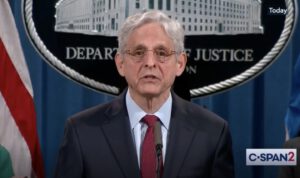School Choice Puts Children First, Empowers Parents with Options
Since the Covid 19 pandemic began, few areas of life have been more reexamined than the education of our children. Many parents have found themselves with too few choices when it comes to how and…

Since the Covid 19 pandemic began, few areas of life have been more reexamined than the education of our children. Many parents have found themselves with too few choices when it comes to how and where their child is educated, causing them to question the current system. In light of these concerns, the school choice movement has seen incredible traction and expansion in 2021. School choice is simply providing parents with educational options in addition to their assigned public school.
School choice programs open educational options to all parents regardless of their income or neighborhood. Education is not a one-size-fits-all proposition and children need to be educated in the environment that best meets their needs, whether that’s a public, private, or home school setting.
School choice takes many forms. If a family moves to a great neighborhood because of its high-performing school, they exercise school choice. If a parent open enrolls her child to another public district, she exercises school choice. If a child receives a scholarship allowing his parents to afford sending him to private school, that’s school choice. If parents educate their child at home, that is also school choice. Although there are many forms of school choice, they all serve the same purpose: to give parents access to the educational option they feel will best equip their children for future success.
In Iowa we’ve had successful school choice programs for several years. Our flagship program is the School Tuition Organization (STO) Tax Credit. This program is funded by private donations of individuals and businesses who receive a state income tax credit of 75% for their donation. School Tuition Organizations are non-profit, scholarship-granting organizations that use those donations to provide tuition grants to families, enabling them to afford the accredited, nonpublic school of their choice. Over 12,000 students receive a tuition grant each school year. The tax credit cap on this program was just expanded to $20 million statewide in 2022. Since its creation in 2006, the STO program has provided nearly $186 million in tuition assistance to students. Over 140 Christian and Independent accredited schools are available to students through this program.
Iowa parents can also receive some assistance by utilizing the long-standing Tuition and Textbook credit, which now gives parents of public, private, or home school children a tax credit of up to $500 per child, per school year, toward qualified educational expenses. This tax credit helps alleviate some of the financial burden of K-12 education expenses, giving parents more options.
2021 brought additional education options to more Iowa parents when the STO program was expanded and laws passed to allow more options for creating public charter schools. We hope to eventually see an educational landscape where parents are in the driver’s seat, where school funding follows a child to their school of choice, where we fund students instead of institutions. A way to do that is to create Educational Savings Accounts (ESAs). With ESAs, a student receives a portion of the state education funding that is deposited in an education savings account. Their parents would then be able to use those funds to cover a breadth of educational expenses including private school tuition, cognitive skills training, tutoring, and other approved costs. ESAs put parents in control and provide them the ability to secure that “best fit” education for their children. ESAs are being used in several states to provide parental choice in education with no harm to the public education system.
School choice is sometimes characterized as a battle between public education and private options, a fight that focuses on politics, bureaucracy, unions, and institutions. The reality is that school choice is about families. It’s about letting parents decide what is best for their children and giving them the tools to access that education option. When we put children first, we will all succeed and flourish.



